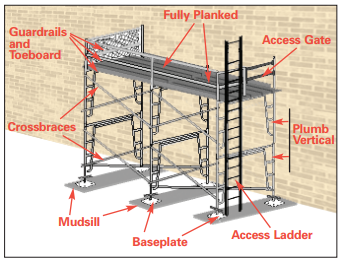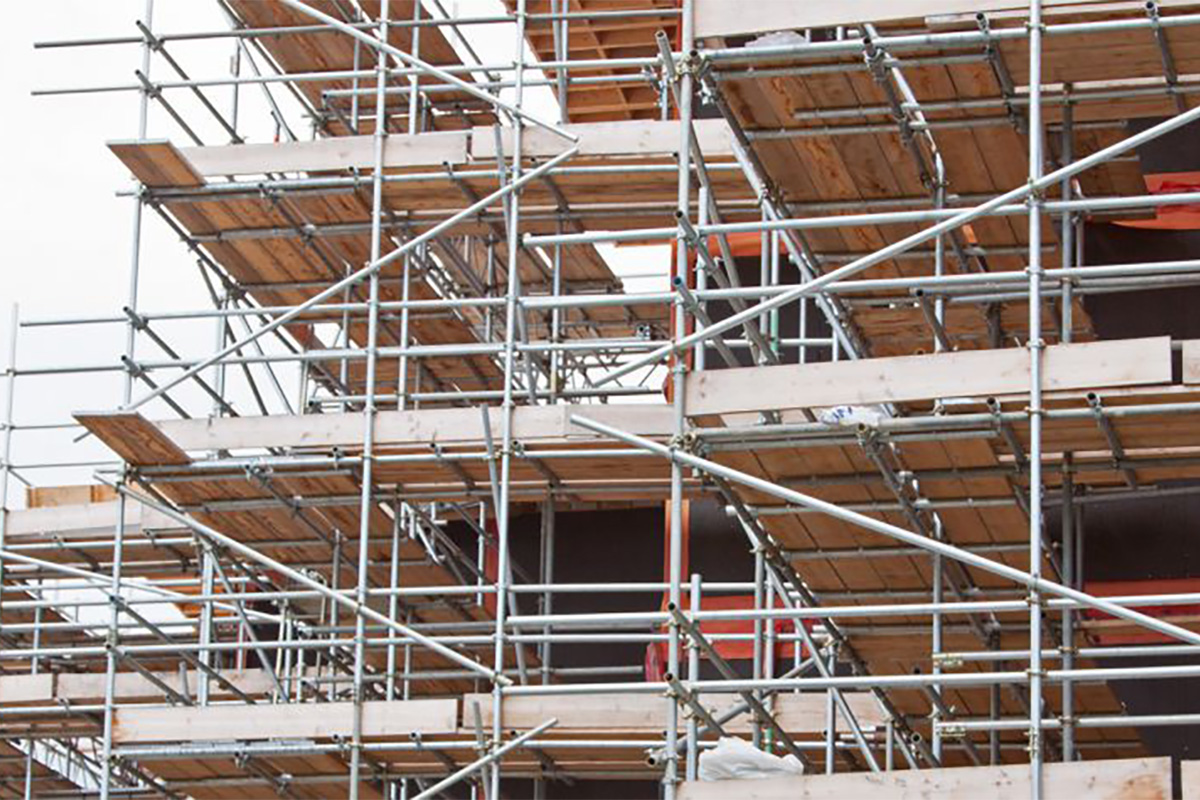Professional Scaffolder Surrey: Your Trusted Partner for Safe Installations
Checking Out the Numerous Kinds Of Scaffolding Made Use Of in Building And Construction Projects
The building sector depends greatly on various kinds of scaffolding to satisfy certain task needs, each offering distinctive advantages and applications. Typical structure scaffolding supplies a sturdy structure for basic tasks, while suspended scaffolding is crucial for work with high-rise structures. Various other choices, such as system and rolling scaffolding, satisfy efficiency and movement, specifically. The cantilever alternative confirms indispensable in metropolitan atmospheres where room is constricted. Recognizing the nuances of these scaffolding types is vital for optimizing safety and security and performance on building and construction sites, prompting a more detailed evaluation of their special characteristics and applications.

Standard Framework Scaffolding
Standard structure scaffolding is among the most extensively utilized techniques in the building and construction market as a result of its toughness and adaptability. This system consists of vertical and horizontal structures that are set up to create a stable platform for workers and products. The main elements consist of upright blog posts, horizontal journals, and diagonal dental braces, which with each other supply a solid structure that can support substantial tons.
Among the vital advantages of typical frame scaffolding is its adaptability to numerous building projects, varying from household structures to large industrial structures. The modular style enables easy setting up and disassembly, making it efficient for both short-term and long-term jobs. Additionally, the system can be personalized in height and width, accommodating various building layouts and site conditions.
Security is vital in scaffolding applications, and conventional frame systems are outfitted with guardrails and toe boards to protect against falls and ensure worker security. Regular assessments and adherence to safety guidelines are vital in keeping the stability of the scaffold (Scaffolding). In general, typical structure scaffolding stays an essential selection in the building and construction sector, offering a reliable system for labor and improving general task efficiency

Suspended Scaffolding
Put on hold scaffolding supplies an one-of-a-kind service for building tasks that call for accessibility to raised surfaces, especially in circumstances where conventional framework scaffolding might be not practical. This sort of scaffolding is commonly suspended from the roof or top degrees of a structure, using a system of pulleys, platforms, and ropes to produce a functioning room that can be readjusted to numerous heights.
One of the main benefits of put on hold scaffolding is its versatility. It can be conveniently repositioned or lowered to fit adjustments in building and construction needs, making it ideal for tasks such as home window installation, façade job, and upkeep on skyscrapers. In addition, the marginal footprint of suspended scaffolding enables for far better use ground area in metropolitan environments, where room is commonly restricted.
Security is an essential factor to consider in making use of suspended scaffolding. Proper rigging and anchoring systems need to be utilized to ensure stability and protect against crashes. Operators needs to also be educated in the risk-free use this devices. In general, put on hold scaffolding provides a effective and reliable remedy for accessing hard-to-reach areas in various building scenarios, enhancing both efficiency and safety and security on website.
System Scaffolding
System scaffolding, frequently considered a contemporary solution in the scaffolding market, consists of pre-engineered components that can be promptly constructed and adjusted for numerous building tasks. Scaffolding. This kind of scaffolding is defined by its modular layout, which enables adaptability and efficiency on job websites, suiting different heights and structural demands
Typically made from high-strength steel or light weight aluminum, system scaffolding offers improved longevity you can look here and stability. The elements consist of upright posts, horizontal journals, and angled dental braces, which interconnect firmly, making certain a durable framework. The style typically integrates standardized fittings, simplifying setting up and disassembly processes, therefore lowering labor time and prices.

Rolling Scaffolding
Moving scaffolding is a versatile option to standard set scaffolding, created for movement and convenience of use on construction websites. This kind of scaffolding consists of a system supported by structures with wheels, permitting workers to easily transfer it as required. The flexibility function considerably improves productivity, as it reduces downtime related to taking apart and setting up taken care of scaffolding.
Typically constructed from lightweight materials such as light weight aluminum or steel, rolling scaffolding uses a durable yet mobile option for projects needing constant repositioning - Scaffolding. It is specifically helpful in tasks such as paint, drywall setup, and electrical job, where access to different heights and areas is essential
Safety and security is vital in rolling scaffolding layout, with features such as securing wheels to prevent unintended movement when being used, and guardrails to safeguard employees from drops. In addition, many models are flexible in elevation, suiting various project requirements.
Cantilever Scaffolding

The design of cantilever scaffolding usually includes using arms or brackets anchored to a building or structure, making it possible for the platform to expand outward securely. Safety and security is critical; hence, these scaffolds have to be engineered to withstand ecological conditions and numerous tons. Routine assessment and maintenance are important to make certain architectural honesty and employee safety and security.
Cantilever scaffolding is favored for its versatility and efficient use of area, making it a prominent selection in urban atmospheres where space restraints prevail. Moreover, it assists in much easier access to high altitudes, ultimately adding to the general performance of construction jobs. Similar to all scaffolding types, appropriate training and adherence to safety and security standards are critical for workers using cantilever scaffolding.
Conclusion
In conclusion, the diverse sorts of scaffolding utilized in construction projects each offer unique purposes tailored to specific website demands. Standard structure scaffolding provides stability, Learn More Here while put on hold scaffolding uses flexibility for raised jobs. System scaffolding promotes fast assembly, and rolling scaffolding boosts mobility for differing work settings. Cantilever scaffolding efficiently deals with challenges in urban settings. Recognizing these scaffolding kinds is necessary for maximizing security and performance in building and construction, eventually adding to the successful completion of projects.
Traditional framework scaffolding gives a tough foundation for general tasks, while suspended scaffolding is vital for work on skyscraper frameworks.Rolling scaffolding is a versatile option to conventional fixed scaffolding, made for wheelchair and ease of use on building sites. As with all scaffolding types, proper training and adherence to security standards are essential for employees using cantilever scaffolding.
Standard framework scaffolding provides security, while suspended scaffolding uses flexibility for raised tasks. System scaffolding original site helps with quick assembly, and rolling scaffolding improves wheelchair for differing job atmospheres.